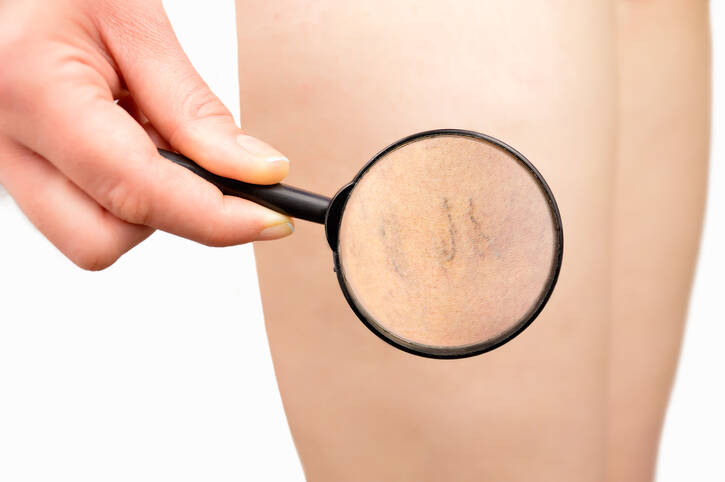- "Chronic Venous Insufficiency". Society for Vascular Surgery. December 1, 2009.
- Whiteley MS (2011). "Understanding Venous Reflux - the cause of varicose veins and venous leg ulcers". Whiteley Publishing. Archived from the original on October 25, 2017.
- Patel S, Surowiec S. "Venous Insufficiency". National Center for Biotechnology Information, U.S. National Library of Medicine.
- Evans CJ, Fowkes FG, Ruckley CV, Lee AJ (1999). "Prevalence of varicose veins and chronic venous insufficiency in men and women in the general population: Edinburgh Vein Study". Journal of Epidemiology doi:10.1136/jech.53.3.149. PMC 1756838. PMID 10396491.
- Robertson LA, Evans CJ, Lee AJ, Allan PL, Ruckley CV, Fowkes FG (May 2014). "Incidence and risk factors for venous reflux in the general population: Edinburgh Vein Study. Eur J Vasc Endovasc Surg. 2014 Aug;48(2):208-14.
- Patel, Shivik K.; Surowiec, Scott M. (2020). "Venous Insufficiency". StatPearls. StatPearls Publishing.
- Avril, Stéphane; Badel, Pierre; Dubuis, Laura; Rohan, Pierre-Yves; Debayle, Johan; Couzan, Serge; Pouget, Jean-Fraçois (25 January 2012). Gefen, Amit (ed.). Patient-Specific Modeling in Tomorrow's Medicine. Springer. p. 218, 220. ISBN 9783642246180.
- Barron GS, Jacob SE, Kirsner RS (Sep 2007). "Dermatologic complications of chronic venous disease: medical management and beyond". Ann Vasc Surg. 21 (5): 652–62. doi:10.1016/j.avsg.2007.07.002. PMID 17823046.
- "Chronic Venous Insufficiency". The Lecturio Medical Concept Library.
- Patrick C Alguire, Barbara M Mathes. "Diagnostic evaluation of lower extremity chronic venous insufficiency". Retrieved 2017-09-12. Topic last updated: Dec 04, 2017.
- Antignani, P. L. (August 2001). "Classification of chronic venous insufficiency: a review". Angiology. 52 Suppl 1: S17–26.
- Hafner, Jürg (1999-01-01). Management of Leg Ulcers. Karger Medical and Scientific Publishers. p. 81. ISBN 9783805566544.
- Maryam Azhdari, Marzie Zilaee, Majid Karandish, Seyed Ahmad Hosseini, Anahita Mansoori, Mohadeseh Zendehdel, Sara Khodarahpour (2020). "Red Vine Leaf Extract (AS 195) Can Improve Some Signs and Symptoms of Chronic Venous Insufficiency, a Systematic Review". Phytotherapy Research. 34 (10): 2577–2585. doi:10.1002/ptr.6705. PMID 32314844. S2CID 216047649.
- Frick, RW (March 2000). "Three treatments for chronic venous insufficiency: escin, hydroxyethylrutoside, and Daflon". Angiology. 51 (3): 197–205. doi:10.1177/000331970005100303. PMID 10744007. S2CID 19421726.
- "Chronic Venous Insufficiency". hopkinsmedicine.org.
- Mowatt-Larssen, Eric; Shortell, Cynthia (2010). "CHIVA". Seminars in Vascular Surgery. 23 (2): 118–22.
Chronic venous disease, insufficiency: What are its causes and symptoms?

Photo source: Getty images
Most common symptoms
- Muscle Pain
- Feeling of heavy legs
- Loss of pubic hair
- Limb pain
- Leg Pain
- Hyperpigmentation
- Scars
- Blue leather
- Wetting of the skin
- Muscle stiffness
- Swelling of the limbs
- The Island
- Muscle weakness
- Muscle cramps
- Itchy skin
- Fatigue
- Ulcer
- Reddened skin
Show more symptoms ᐯ
Treatment of chronic venous disease: medication? Movement and lifestyle are a must
Show more









